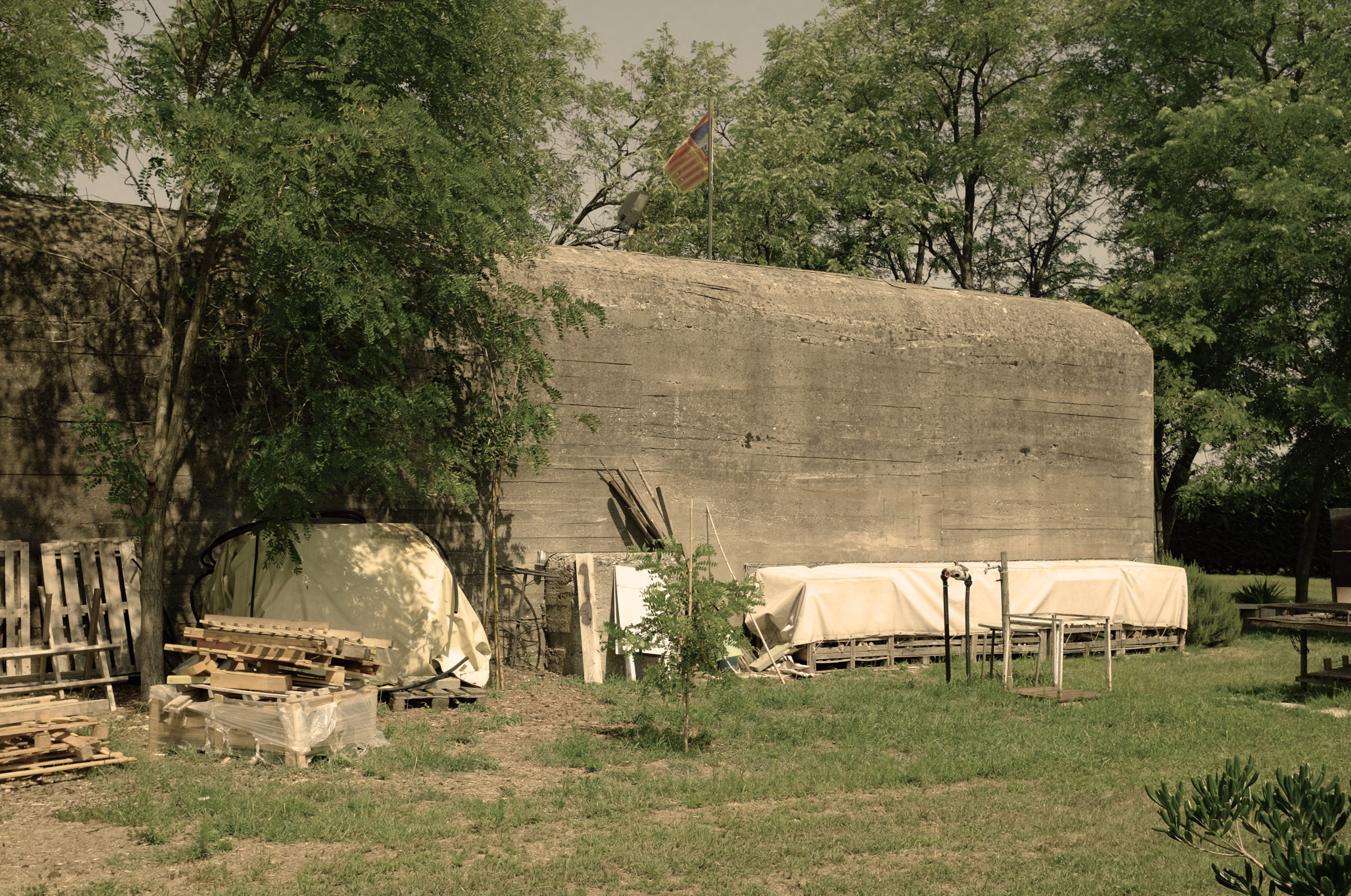
During WWII, a high number of bunkers and casemates were implanted upon the territory of the Venice lagoon. How have these massive monolithic shapes contributed to the reorganisation of the postwar landscape? Have they remained as inert forms or have they rather established a relationship with the inhabitants of their surroundings? Concrete shores is a glimpse into the physical and emotional geography that surrounds these monolithic ruins.
I am meeting him for the first time in his office, and his office is in a supermarket. Serious look, glasses, his vest carrying the logo of his own company, he immediately appears to me as polite and well-mannered. He says he’s surprised that someone has contacted him to enquire about the bulky concrete structure that lies in one of his family’s fields. “It’s only a five-minute drive away”, he tells me. “Just let me finish something on the computer and I’ll be with you shortly”.
From the car window, cultivated fields flow one after the other. The atmosphere is that of the countryside, rather than the lagoon. We are in Punta Sabbioni, the bottom of a wider land strip enclosing the lagoon of Venice to the northeast; an area of campsites, meadows and a few roads, an expanse of silence before the peninsula reaches Jesolo, a renowned nightlife resort of the northern-Italian summer.
As we drive, it occurs to me that I am not surprised by the fact that my host has a fortress in his front yard. This very territory has a centuries-old history of defence. From the ancient, wandering bastions – the Republic’s own fleets, strategically sailing the web of islands as safe points of manoeuvre – to the casemates that the German and Austrian armies built on these shores during the two world conflicts, this system of water and lands has often resurfaced as a bio-artificial membrane whose fluidity proved ideal for warfare.
In times when nations were at battle, the very inlet of Punta Sabbioni, which the car is now fast leaving behind, was a strategic location where sea and land would join forces for self-protection. All maritime traffic could be monitored from here, acting promptly if circumstances so required. Since the end the War of Chioggia (1381), when the endurance of the Republic was seriously threatened by external enemies, these shores have, at various times, undergone important moments of fortification and modernisation. In today’s peacetime, the inlet holds its vital character, representing the main commercial and tourist gateway to the city. Cargo destined for South America, as well as large cruise ships reaching Venice as the grand finale of their journey, all navigate through here, between the approaching lights of the Veneto capital and the silence of the empty forts.
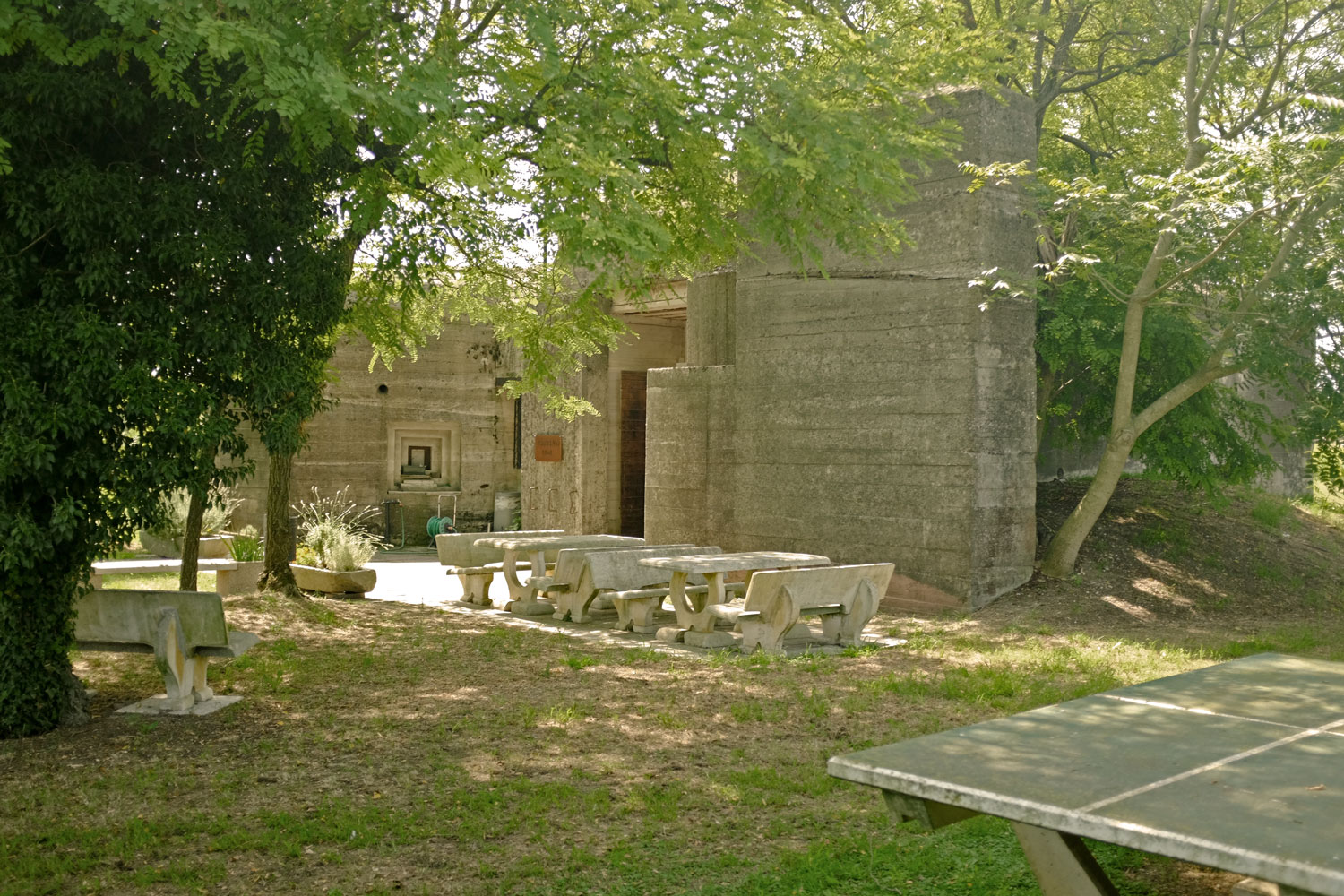
The bunker stands next to a quiet country road, resting in the middle of a neat private lawn. Its features are vaguely disturbing; perhaps this is due to the building’s imposing presence, which takes hold of the field as if it were an unexpected eruption in the landscape. Still, its aspect is also fascinating. The windows are framed in meticulous detail, the gigantic entrance door runs on rails (open, sesame!) and, inside, the ceilings are made out of a seemingly infinite mosaic of wooden pieces.
The interior spaces are wider than I expected, and there are more rooms than I would have imagined, penetrating one after the other inside the creature’s womb. An immense table occupies the central space of the main room, surrounded by dozens of chairs. “It has become the home of the local basketball team”, explains my host. Photos of all the teams of the last thirty years adorn the bunker’s walls, whilst a number of trophies lie in semi-darkness on the shelves. I am struck by the objects from a distant past, brought in from the external world: a disquieting sickle from the beginning of the 20th century, pieces of a tractor of the postwar period, flasks and demijohns – as if to prove that there was never any war, but only the eccentric, private shelter of a local sports club.
“Every now and then, we celebrate here with the boys after the matches”. I catch a glimpse of the courtyard, and I see it is equipped with a barbecue, folding benches, deckchairs and ping-pong tables. It is a beautiful summer’s day, and I find this place cosy. Even the architectural components seem to have lost their functional nature to be reborn instead as decorative elements.
And yet, war is intrinsically present in every corner of the building. The bunker was made to defend and contain, to survive in the event of an attack. The windows are deeply embedded in the walls and look like slits, painfully disproportionate to the interior; the entrance doors would withstand any blow, the wooden mosaic that adorns the ceiling is nothing but the visible part of a layer meant to muffle grenades.
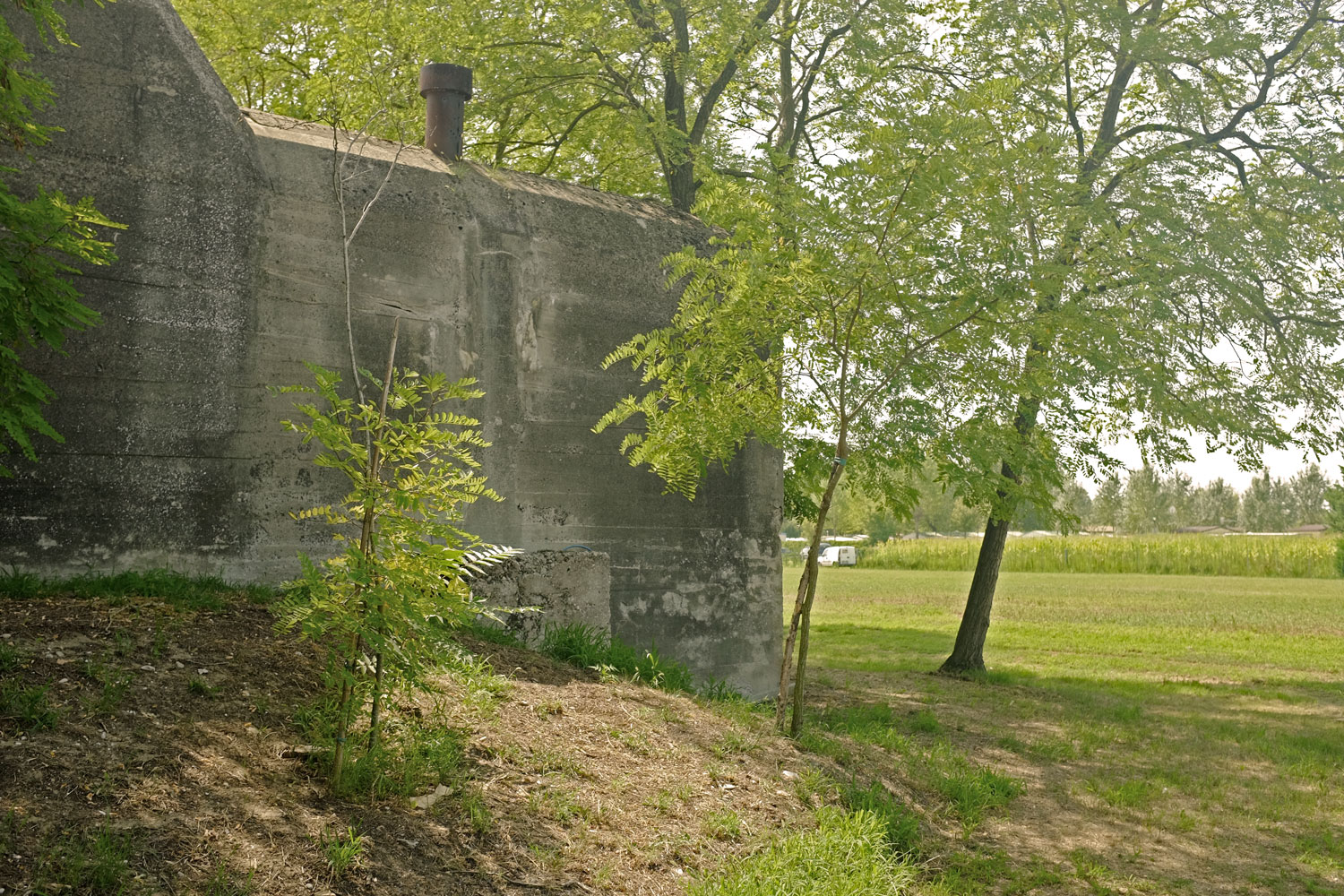
When reflecting upon the role of 20th-century military ruins, Paul Virilio’s Bunker Archeology (1975) naturally comes to mind. In this seminal essay – simultaneously a historical, archaeological and architectural study – the French philosopher focuses on the ghostly remains of the so-called Atlantic Wall, an impressive system of fortifications built by Nazi Germany in the early 1940s in order to prevent the Allies landings from the North and the West. Extending from Norway to the Franco-Spanish border, the German blockade shored up the Western European seaside for about 5,000 kilometres, imposing itself as a scattered and yet colossal fortress.
Despite the weighty history of their subjects, Virilio’s photographs are stunning and seem to perfectly epitomise that ‘monolithic’ nature of the casemate which the author stresses throughout the text. The bunker is built in order to respond to the contingencies of warfare; therefore, it ‘does not aim to survive down through the centuries; the thickness of its walls translates only the probable power of impact in the instant of assault’.1 As such, the bunker has no foundations, and relies uniquely on its own centre of gravity; a relative autonomy that allows the casemate to float on the terrain, guaranteeing stability in an environment that, having become a magnet for projectiles, is destined to sudden and random modifications.
This drifting quality of the monolith brings further evidence to a paradoxical nature of provisionality and endurance, which Virilio effectively illustrates by likening the casemate to a kind of collective clothing: ‘just as you put on your armour for combat, or your raincoat in the rain, you go to the fort when the peacetime conditions of the environment yield to wartime weather conditions’.2

If I accept the bunker by keeping these passages in mind, then it seems inevitable: the ghost of the architectural function crosses the massive walls, climbs over the barrages, slips into the passageways to the machine gun turrets, nestles in the bullet holes that coarsen the skin of the building. How can my host not see it? What differentiates these bunkers from those that are lying on the Venetian shores? On the one hand, I understand the aestheticisation of similar war residues. Indeed, Virilio’s photographs bear witness to this very possibility, of which I am myself a victim. On the other, the French shores still seem to pulsate with the echo of a martial wind, in a relationship with their concrete guests that struggles to be fully reconciled.
This conflicting relationship may not only be due to the bunkers being vessels of a past still perceived as too close, but also, as Malise Ruthven notes, to their contradictory status of being ‘monuments to failure’ – a double failure: that of the national armies, incapable of counteracting the German invasion, and, ironically, that of the wall too. In fact, as scholars remark, this belt of fortifications transpired to be ineffective.3 Besides the incommensurable human cost, 17 million cubic meters of concrete and 1,200,000 tonnes of steel were used for the construction of the continental fortress, not only depriving Germany of fundamental materials for its war factories but eventually leaving, on the suffering shores, an unfinished and severely atomised bastion. Not by chance, the Allies avoided Pas-de-Calais, the most robust part of the wall, and famously launched the amphibious attack across Normandy, overcoming the less-developed defence system of the area within only one day.
Aside from the main D-Day sites, which have turned into museums, the majority of the Wall’s casemates lie abandoned, as detritus from another world that cannot be removed. Thus, since Virilio’s report, the bunkers have undergone the further activity of their surroundings – overtaken by nature, collapsing into the soil, their coatings overrun with graffiti. They are in a state of slow-motion disintegration, as if the landscape were patiently waiting to absorb and dissolve the residue of that long-gone adversary that scarred it.
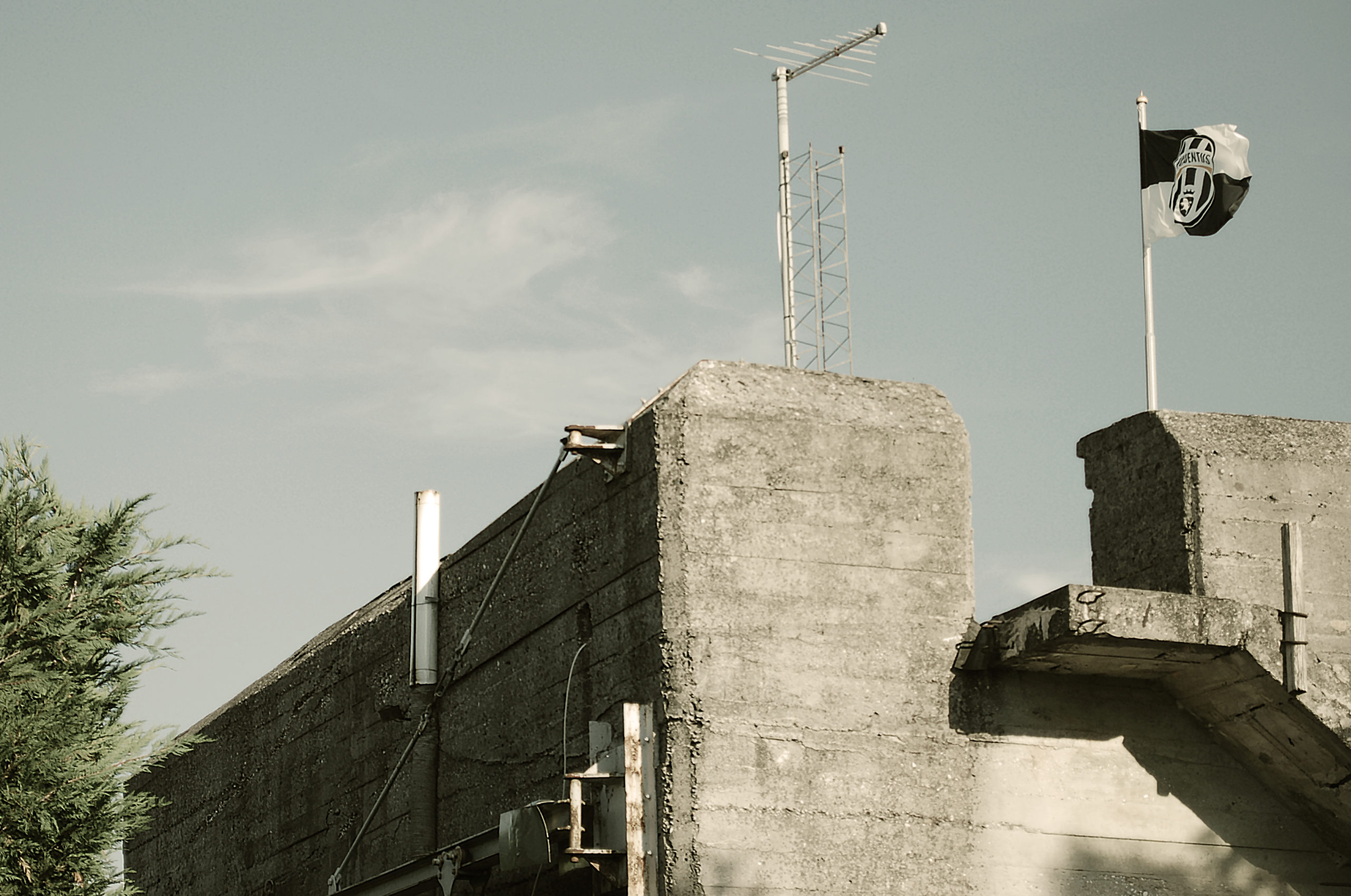
In Venice, the situation seems to be different. In my various explorations, I encountered military shelters that have become completely ingrained within the fabric of daily life: whether stores, wine-cellars, warehouses, offices, private workshops or places for gathering, the casemates breathe along with the rest of the city.
One may think that, for the very topographical characteristics of the lagoon (such as its limited habitable area), bunkers turned out to be useful constructions for reuse. However, this may not be the only explanation of their resurgence. The Todt organisation did build a high number of fortified architectures, in particular along Cavallino-Treporti, reinforcing this strip of land for anti-aircraft and anti-landing purposes. Yet, the German structures were born as part of a pre-existing defence system which was reactivated during the last conflict, and that included batteries of the Great War as well as nineteenth-century fortresses such as the Austrian-built Forte Treporti.
Therefore, if the Western European bunkers were hastily imposed over the territory, scarring the coast as if the casemates themselves were ammunition dropped from above, in Venice their implementation was yet another layer onto the skin of a land that has always contemplated defence as part of its vital processes.
This specific nature of the area may have contributed to that particular anthropological relationship with the old concrete monoliths that characterises the Venetian lagoon, where the territory seems to have accepted the martial ruins as a natural byproduct of its body.
After the last war, the land was redistributed to the citizens, allowing local bunkers to be gradually brought back to life. Both citizens and state have intervened upon the concrete creatures: whilst the law has protected the outside walls – deemed untouchable due to their historical value – the interior could, and indeed still can be reinvented at the full discretion of the landlord. This simultaneous, double-mediation has allowed for the establishment of a unique architectural object.
In wartime, the bunker was the threshold of the house, a point of contact between the inside of the country that had to be defended, and the outside that loomed violently. Its walls protected and watched over the soldier’s sleep; at the same time, however, these walls enclosed necessary and highly regulated actions, a setting in which the body was administered by commands. How do the Venetian bunkers reconcile the remnants of this past nature with their new found purpose?
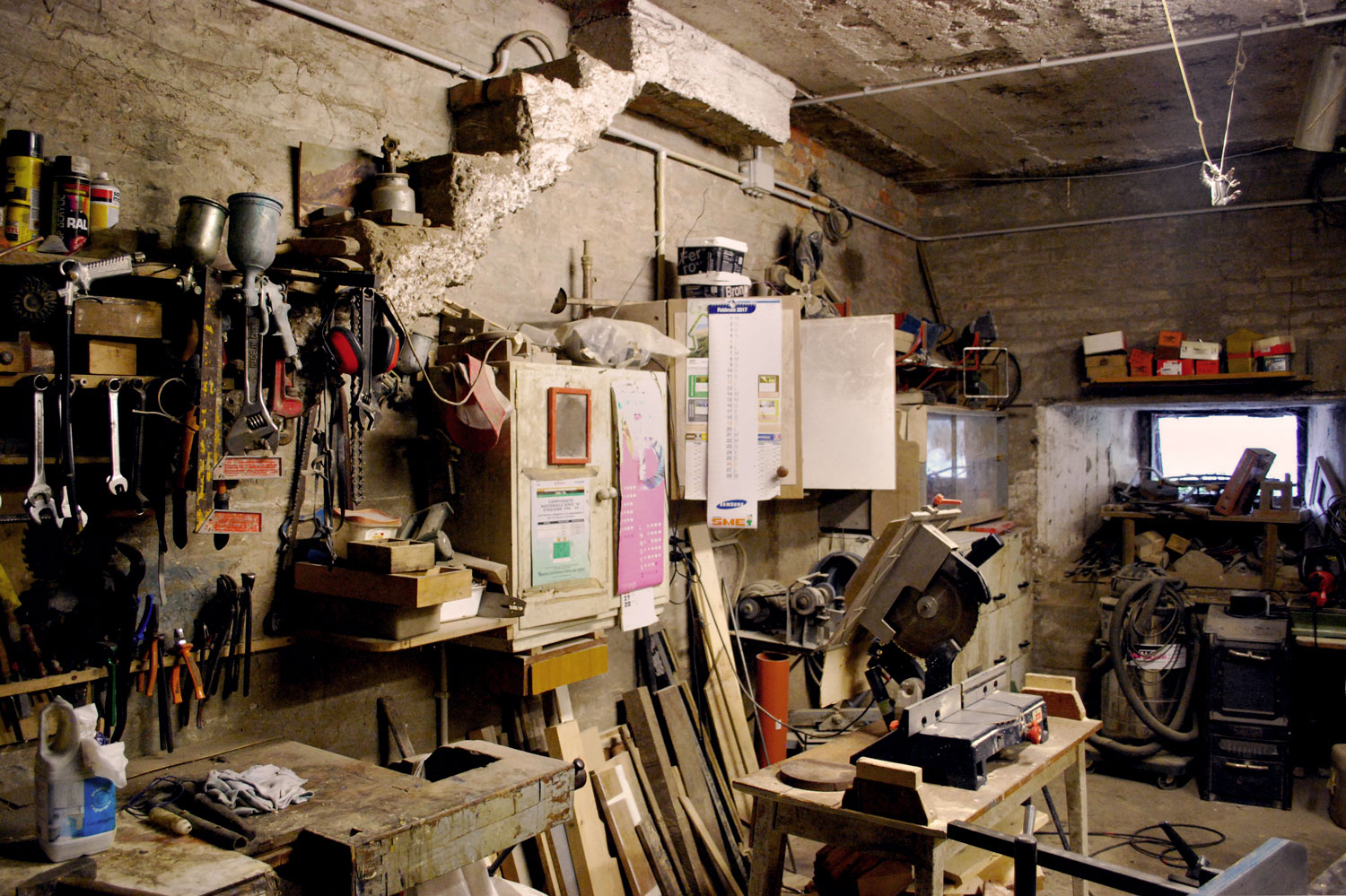
In 1957, Gaston Bachelard published The Poetics of Space. Here, Bachelard explains, from a phenomenological point of view, how space influences poetic imagination. The house is understood as a vertical being, and this verticality is ensured by the polarity of the cellar and the attic. These extremes are antithetical, as they represent the opposition between the rationality of the roof, which immediately declares its function of shelter, and the irrationality of the cellar, which is, first and foremost, the dark entity of the house. Here, as Bachelard notes, ‘darkness prevails both day and night, and even when we are carrying a lighted candle, we see shadows dancing on the dark walls’.4
With this in mind, I cannot but consider how the bunker shares some of the basic characteristics of Bachelard’s cellar, yet brought to the extreme. Dark and damp, the casemate’s features are not just the source of the irrational and the frightening, but the architectural crystallisation of their anticipation: through its very walls, the bunker condenses the fear of events that are meant to take place. These are external events, however, from which one only finds shelter by withdrawing into the shell, by dressing in the very armoured clothing that announces the arrival of the alarming forces.
During Venetian peacetime, the bunker’s walls become a new type of threshold, one that is able to effectively juxtapose present and past. The casemate is both war testament and house, mausoleum and place of life, it looms over the landscape as a memento of the effects of conflict and acts as a banner for creative imagination and reinvention.
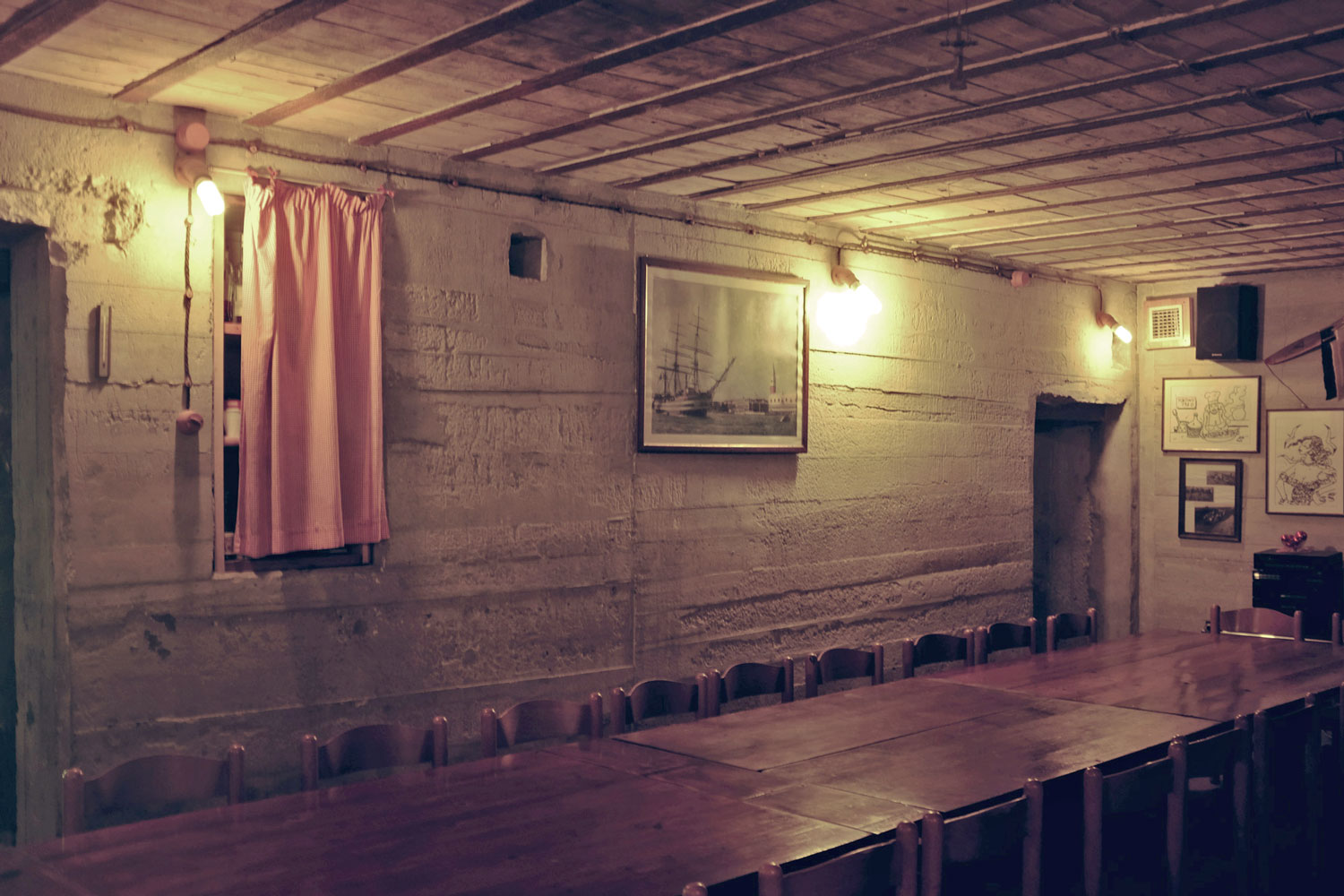
Thus, one may attend a basketball team party in the shadow of machine gun turrets, or meet their neighbours for a Sunday lunch prepared in a fortification that served as a power-plant. It is possible to dive in a swimming pool whose structure once hosted the gears of a self-propelled cannon, whereas others may organise football match viewings in what used to be a fully equipped war radio room. In this sense, the bunker has ceased to be only a landmark that emerged from war, but now contributes to the establishment of social markers within the community.
As I experience the enthusiasm with which I am introduced to these relics of war, the connection with Bachelard now appears legitimate. The double nature of the bunker – simultaneously a monument externally and a blank space internally – makes verticality collapse, condensing cellar and attic into the single-form monolith. Whereas the bunker, as a monument to a past vibrating with history and menace, may activate the affective echoes that characterise the cellar, the internal becomes a place where fears can finally be rationalised and, to conclude with the words of Bachelard, the ‘day’s experiences can always efface the fears of night’.5
Footnotes & references
[1] Paul Virilio, Bunker Archeology, (1975) (New York: Princeton Architectural Press, 1994) p. 39
[2] Ibid., p. 42
[3] See article at https://www.nybooks.com/daily/2014/06/05/hitlers-mighty-miscalculation/
[4] Gaston Bachelard, The Poetics of Space, (1958) ( New York: Penguin, 2014) p. 40
[5] Ibid., p. 40
Special thanks to Daniele Zoico / Danto Production for their film work.
Recent articles

Southern California is many things. Quite infamously, it is known as a landscape defined by the automobile, from the emergence and diffusion of the highway system to fast food burgers, and the suburbanization of the United States. Walking this place then, would seem not only inconvenient, but ill advised. In… Read more »

What is today known as ‘whistleblowing’ could once take the form of interacting with a threatening gaze carved into the city wall. It is the case of the ‘boche de Leon’ or ‘lion’s mouths’ disseminated by the old Venetian Republic throughout its territory to suppress illegal activities. Through a close… Read more »

As he navigates through the recurrent lockdowns of the pandemic, stranded between hitchiking and muggings, job hunting and separations, Fabio Valerio Tibollo rediscovers photography as a powerful coping mechanism. Recording everything that happened around him for one year straight, from attending momentous events to finding curiosity in shots of simple living,… Read more »

